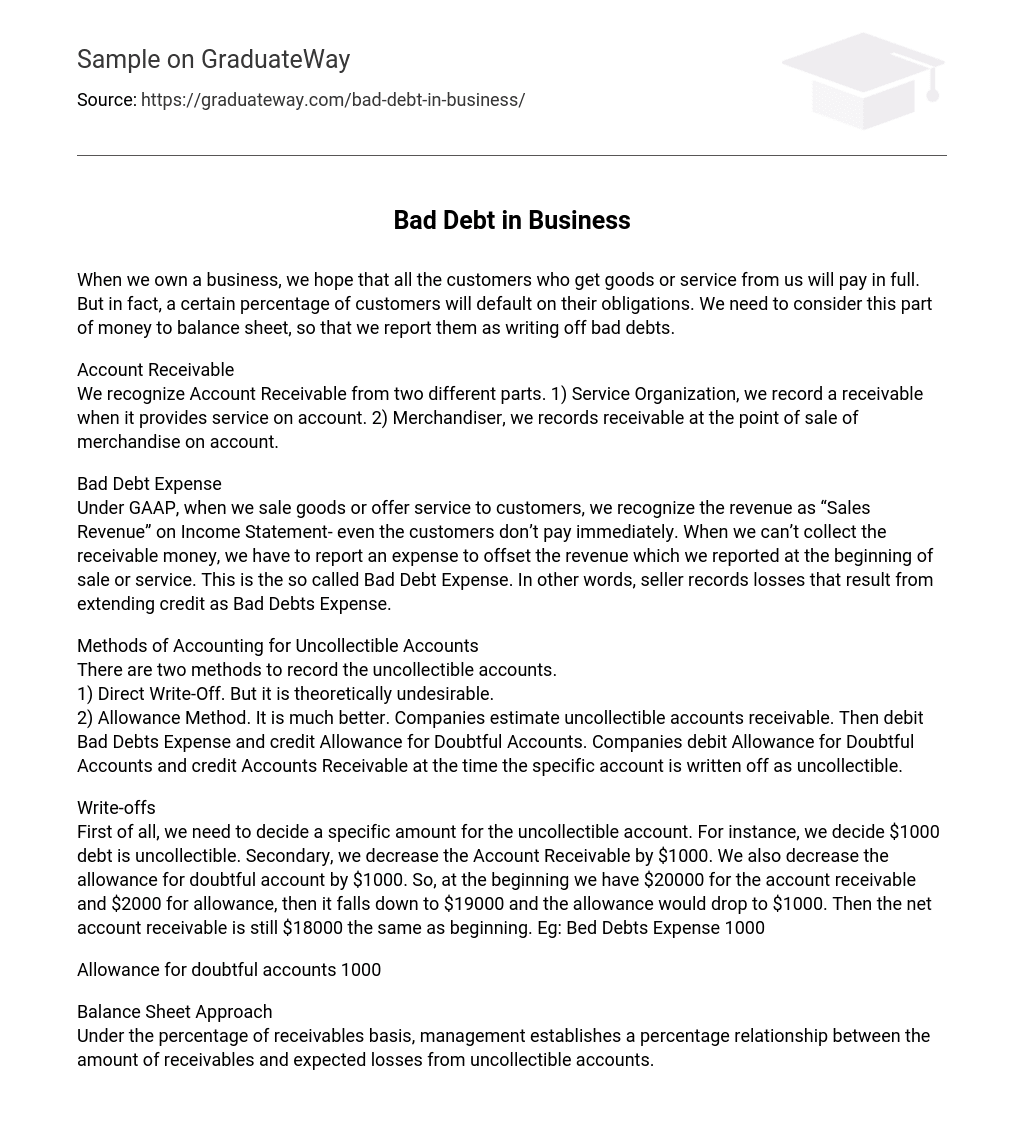When we own a business, we hope that all the customers who get goods or service from us will pay in full. But in fact, a certain percentage of customers will default on their obligations. We need to consider this part of money to balance sheet, so that we report them as writing off bad debts.
Account Receivable
We recognize Account Receivable from two different parts. 1) Service Organization, we record a receivable when it provides service on account. 2) Merchandiser, we records receivable at the point of sale of merchandise on account.
Bad Debt Expense
Under GAAP, when we sale goods or offer service to customers, we recognize the revenue as “Sales Revenue” on Income Statement- even the customers don’t pay immediately. When we can’t collect the receivable money, we have to report an expense to offset the revenue which we reported at the beginning of sale or service. This is the so called Bad Debt Expense. In other words, seller records losses that result from extending credit as Bad Debts Expense.
Methods of Accounting for Uncollectible Accounts
There are two methods to record the uncollectible accounts.
1) Direct Write-Off. But it is theoretically undesirable.
2) Allowance Method. It is much better. Companies estimate uncollectible accounts receivable. Then debit Bad Debts Expense and credit Allowance for Doubtful Accounts. Companies debit Allowance for Doubtful Accounts and credit Accounts Receivable at the time the specific account is written off as uncollectible.
Write-offs
First of all, we need to decide a specific amount for the uncollectible account. For instance, we decide $1000 debt is uncollectible. Secondary, we decrease the Account Receivable by $1000. We also decrease the allowance for doubtful account by $1000. So, at the beginning we have $20000 for the account receivable and $2000 for allowance, then it falls down to $19000 and the allowance would drop to $1000. Then the net account receivable is still $18000 the same as beginning. Eg: Bed Debts Expense 1000
Allowance for doubtful accounts 1000
Balance Sheet Approach
Under the percentage of receivables basis, management establishes a percentage relationship between the amount of receivables and expected losses from uncollectible accounts.





